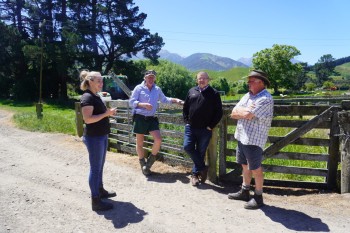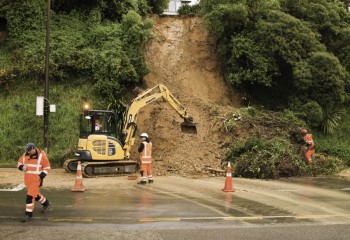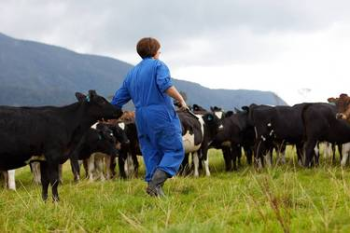 Coming up the home straight - A high country journey to TB freedom in New Zealand
Coming up the home straight - A high country journey to TB freedom in New Zealand
Over the past decade, OSPRI has been edging closer to eliminating bovine TB from New Zealand. We have gone from 1700 herds in the 1990s to less than 30 herds at the start of 2023.
An example of how the eradication programme is working can be seen in the upper South Island high country of Molesworth Station and the neighbouring Muzzle and Bluff Stations. With the recent 1080 aerial operations, farmers in the area are feeling positive that their properties may soon be clear of TB.
Check out the video below to hear from farmers about the progress made in the upper South Island high country.

Photo credit: Dave Allen, NIWA
Support for farmers affected by Cyclone Gabrielle
With many farmers still recovering from Cyclone Gabrielle, we have extended NAIT reporting timeframes in the Tairāwhiti and Hawke's Bay regions.
The updated timeframes will apply until 28 April 2023.
We are also working with landowners in cyclone affected areas to assess potential impacts on the vector control programme. There are a number of challenges to consider, so we're taking a measured approach and we're communicating with those communities who are impacted.
Getting more support
The Ministry of Primary Industries (MPI) continues to provide valuable information, support and funding for those farmers affected by Cyclone Gabrielle.
Rural Support Trust has local, rural people who know from experience that pressures can mount up. They can help with all kinds of situations, from having a sit-down talk to financial and feed queries.
 Do you believe on-farm biosecurity is vital? Join an OSPRI Committee!
Do you believe on-farm biosecurity is vital? Join an OSPRI Committee!
We’re always on the lookout for engaged and energetic farmers or rural professionals to work with. Especially those who are passionate about their sector, its markets and understand that good on-farm biosecurity is vital.
If that sounds like you, then express your interest to take a seat at one of our 12 regional committees.
With AGMs fast approaching, now’s the time to understand the benefits of being a committee member and find out how you can get involved.
 Meet Lisa Kearins - OSPRI's new Associate Director
Meet Lisa Kearins - OSPRI's new Associate Director
What does it take to be an effective board member, you might ask?
According to OSPRI Board Director James Parsons, the richness of the board really comes from debate, testing ideas amongst robust discussion and through that dialogue getting the collective wisdom of those around the table.
That’s what Lisa Kearins will be learning and observing in her new voluntary role as Associate Director for the next 18 months. She will join the board meetings and contribute to the dialogue as well as learn what is involved in being on a board.
Currently, Ms Kearins is a Business Manager at Huiarau Farms Partnership (a Māori Agribusiness which manages two dairy farms and two dry stock farms with over 1800 hectares of effective land) and her main responsibilities are finances and human resources, and reporting each month to the Partnership’s board. Her interest in governance stems from her interactions with the board. “The opportunity to take on the role of associate director is something that will both challenge and refine my understanding of governance.”
OSPRI has been running this programme since 2013 and so far, six people have taken up the role. Its main purpose is to help the individual develop governance skills within the primary sector, says Parsons. “Essentially, it’s a bit of a leg up. The last associate director was Dani Darke and she now sits on the Ballance Agri-Nutrients Board. When she took up the Associate Director role with us, like all new directors she had to learn how to inject her ideas into the fold. You have to have not only conviction but also wisdom when picking your moments to say something. It sometimes takes a lot of confidence and skill, which is exactly what the associate role is there to grow.”
For Lisa, as well as learning how the Board operates and brushing up on her debating skills, she’s looking forward to spending time with each of the board members to find out what they do. “This is really an educational role, and I can just be myself and ask all the questions I need to and be fully involved. My whakapapa is Ngai Tahu and Ngati Kahungunu ki Wairarapa where my mother hails from, so this is also a chance to share what I learn with my family and community".
OSPRI is governed by a Board of Directors, currently with 7 directors. These positions are appointed by the shareholders on the basis of recommendations by the OSPRI Stakeholders’ Council. The decisions made by the Board help shape the direction that OSPRI takes as an integrated disease management agency.

